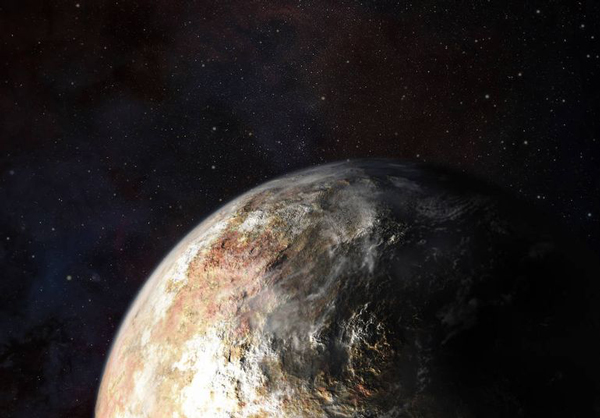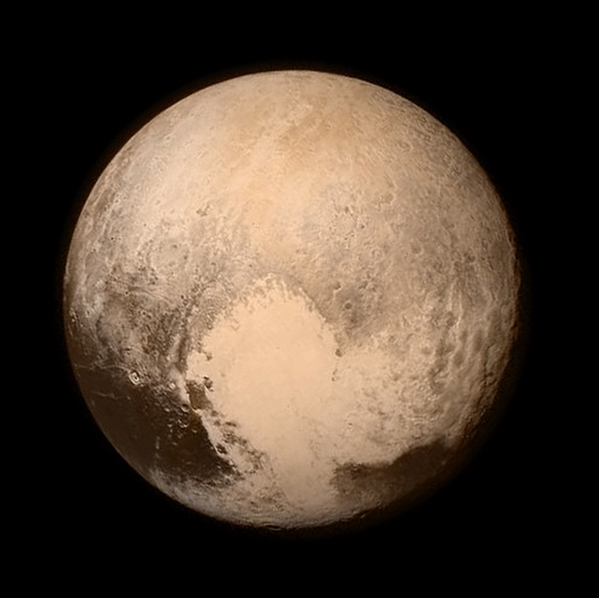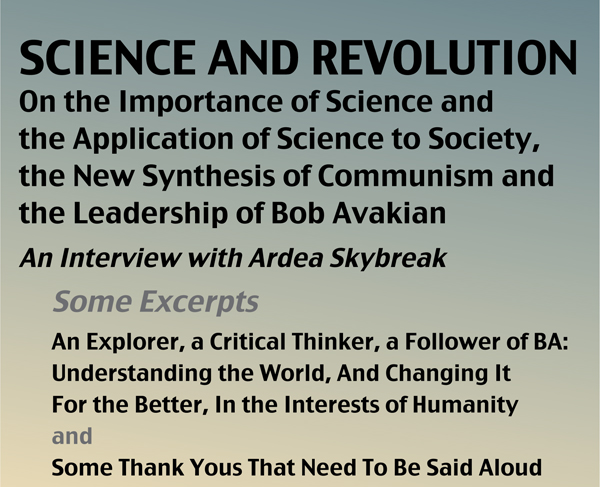The Amazing Pluto Mission
July 20, 2015 | Revolution Newspaper | revcom.us

Latest photographs of Pluto taken from the New Horizons spacecraft July 13, 2015. Photos: NASA

From a reader:
This past week, NASA’s New Horizons spacecraft sent the first close-up images of Pluto, a dwarf-planet at the edge of our solar system. Pluto was only discovered 85 years ago and has remained largely unseen and unknown because of its vast distance from Earth.
As the New Horizons flew within 8,000 miles of Pluto and then sent back photos and data, mission scientists broke out excitedly in cheers. This phase was a culmination of long years of work and expectations and now had been successfully pulled off! This mission does capture something really important about the need for humanity to be amazed and the excitement of scientific discovery into new things, in this case areas of the universe previously poorly understood. And it raises the importance of opening all this up for humanity, including especially sections of humanity who are systematically denied access to science, discovery, and the scientific method.
The information from the mission will help write new chapters about Pluto, its five moons, and the region it is part of. Exploring Pluto and this far-flung region of icy worlds known as the Kuiper belt has been a dream of scientists for some years. They hope to learn more about the nature of these worlds and also gain insight into the history of the evolution of our solar system. The press kit on the mission says, “Reaching this ‘third’ zone of our solar system—beyond the inner, rocky planets and outer gas giants—has been a space science priority for years, because it holds building blocks of our solar system that have been stored in a deep freeze for billions of years.”
New Horizons is the fastest space probe ever launched from our planet, traveling at 31,000 miles per hour. Yet Pluto is three billion miles from Earth, so it took the craft nine years to reach the small world. The spacecraft is only the size of a grand piano, and yet is equipped with scientific equipment that is extremely cutting edge and incredibly efficient. A scientist connected to the mission said the craft has seven different scientific instrument stations that are so efficient they use as much energy as a night light. The craft’s cameras and other instruments have gathered information on the chemical make-up, geology, temperature, atmosphere, and other features of Pluto and its orbiting moons.
The images and other data gathered by the craft reveal exciting features of Pluto. Incredible photos show a geography previously unknown—mountains made of ice that are apparently as high as the Rockies, and a basically smooth plain unmarred by crater impacts and divided into irregular segments by troughs. Scientists said that based on this initial look, the lack of craters indicates this particular region in the “center of Pluto’s vast heart-shaped feature” is relatively young (in geological terms) and could be the site of ongoing erosion or tectonic activity over the past 100 million years.
New Horizons was sent to do a speedy flyby of Pluto instead of entering into its orbit. It now continues on beyond Pluto. Over the coming year and more, the craft will be sending back more photos and information that scientists, and through them all of us, can learn from and be amazed by.
Volunteers Needed... for revcom.us and Revolution
If you like this article, subscribe, donate to and sustain Revolution newspaper.









